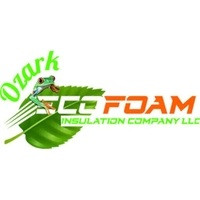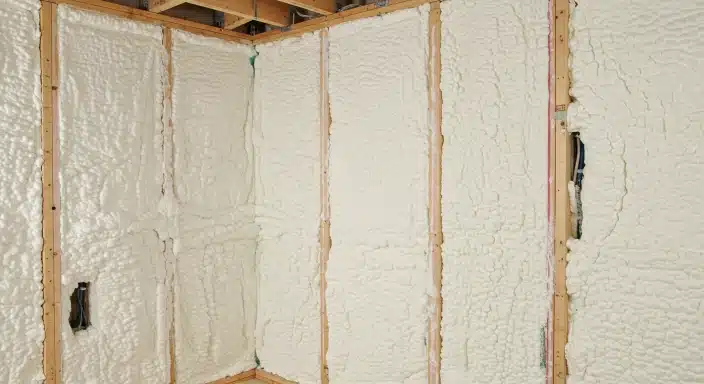Moisture Migration Issues Solved in Marietta, OH

Strong 8k brings an ultra-HD IPTV experience to your living room and your pocket.
Moisture migration presents significant challenges in Marietta, OH, due to the region’s humid continental climate, which features hot summers and cold, damp winters. The movement of moisture through walls, ceilings, and floors can cause structural damage, mold growth, and reduced insulation performance. Controlling this issue requires a combination of proper insulation choice, vapor barriers, and installation methods tailored to local climate conditions. Addressing moisture migration early prevents costly repairs and maintains indoor air quality.
Ohio Valley Spray Foam has extensive experience solving moisture migration problems by applying appropriate spray foam insulation solutions and moisture control techniques. The company’s approach focuses on sealing air leaks and controlling vapor flow, critical to limiting moisture penetration in homes and commercial buildings across Marietta. The following sections explain key factors, solutions, and technical details related to moisture migration.
How Moisture Migration Affects Buildings in Marietta, OH
Moisture migration occurs when water vapor moves through building materials driven by differences in temperature and humidity between indoor and outdoor environments. In Marietta, warm humid air in summer and cold air in winter create conditions for vapor to pass through walls and ceilings, often condensing inside the building envelope.
Key Effects of Moisture Migration
- Structural decay such as wood rot or corrosion of metal components
- Reduced thermal efficiency due to damp insulation materials
- Mold and mildew growth leading to health hazards
- Damage to drywall, paint, and finishes
Moisture issues arise from inadequate air sealing, improper vapor barrier placement, and unsuitable insulation types. Resolving these requires understanding how local weather impacts vapor movement.
Methods for Controlling Moisture Migration
Spray foam insulation provides a practical solution by acting as both an air barrier and a vapor retarder. Closed-cell spray foam insulation in Marietta is dense and resistant to water vapor passage, while open-cell foam offers air sealing but requires an additional vapor barrier in humid climates.
Regional Climate Impact on Moisture Control Strategies
Marietta’s seasonal humidity fluctuations require specific installation techniques. Closed-cell spray foam is often preferred because it limits vapor diffusion year-round. Open-cell foam can be used if paired with a polyethylene vapor barrier on the warm-in-winter side of the wall to prevent moisture entry during winter months.
Practical experience shows that installing spray foam with tight seams and covering vulnerable framing points reduces moisture migration significantly. In basements and crawl spaces, closed-cell foam prevents ground moisture from penetrating, a common problem in Ohio.
Bonus Tip
In Marietta, applying spray foam on both interior and exterior wall surfaces enhances moisture control by providing dual vapor barriers and improving insulation continuity.
Things to Consider Before Making a Decision
Climate impact: Choose insulation based on local temperature and humidity patterns.
Vapor barrier placement: Correct location of vapor retarders is vital to avoid trapping moisture inside walls.
Installation quality: Proper application without gaps or voids is essential for effective moisture control.
Building usage: Residential and commercial structures may require different approaches based on ventilation and occupancy.
Cost vs. performance: Closed-cell foam costs more but offers superior moisture resistance compared to alternatives.
Services Offered by Ohio Valley Spray Foam Related to Moisture Control
Residential Spray Foam Application of closed-cell and open-cell spray foam tailored to household moisture and insulation needs.
Commercial Spray Foam Customized spray foam solutions for larger buildings focusing on air sealing and moisture management.
Closed-Cell Spray Foam Dense, low-permeance foam providing superior vapor and air barrier properties.
Open-Cell Spray Foam Cost-effective option with air sealing benefits; requires additional vapor barrier in humid climates.
Pole Barn Spray Foam Insulation designed for agricultural buildings prone to moisture exposure.
Agricultural Spray Foam Specialized spray foam addressing moisture and temperature control in farm structures.
Blown-in Fiberglass Insulation Supplemental insulation often used with spray foam for thermal layering but less effective for moisture control.
Common Questions About Moisture Migration Solutions
How can moisture migration damage be detected early? Look for signs like musty odors, peeling paint, or warped wood. Moisture meters can identify hidden dampness inside walls.
Is closed-cell spray foam always better for moisture control? It generally offers better moisture resistance, but project specifics, budget, and climate may influence the choice.
Can existing insulation be improved to fix moisture issues? Yes, applying spray foam over or replacing poor insulation can stop moisture migration if done correctly.
Frequently Asked Questions
What maintenance is required after spray foam installation? Regular inspections for cracks or damage in the spray foam and monitoring indoor humidity levels keep moisture control effective.
Does spray foam insulation improve indoor air quality? By sealing air leaks and reducing mold growth, spray foam indirectly improves indoor air quality.
Can moisture migration cause health problems? Yes, prolonged dampness promotes mold and mildew, which can cause respiratory issues and allergic reactions.
What is the lifespan of spray foam insulation? Properly installed spray foam can last 20-30 years or more without losing performance.
How does vapor barrier placement differ between closed-cell and open-cell foam? Closed-cell foam usually acts as its own vapor barrier; open-cell foam requires an additional vapor retarder on the warm side of the wall.
Ready to Achieve Reliable Moisture Control?
Apply these insights now: Schedule an assessment with Ohio Valley Spray Foam to address moisture migration challenges effectively. Proper insulation and vapor barrier choices protect your building structure and indoor environment from moisture damage.
Ohio Valley Spray Foam Phone: (740) 629-9984 Email: [email protected]
Reviewer: With 11 years in the spray foam field, Aiden Baker reviewed this content and provided advice on building steady growth through practical, honest communication.
Note: IndiBlogHub features both user-submitted and editorial content. We do not verify third-party contributions. Read our Disclaimer and Privacy Policyfor details.



